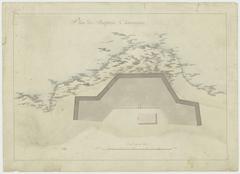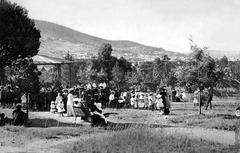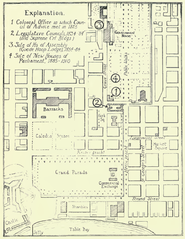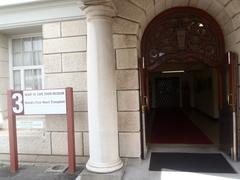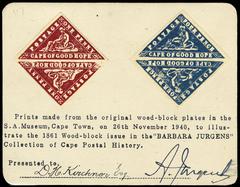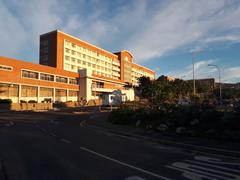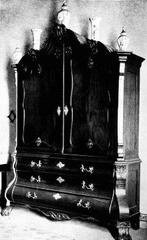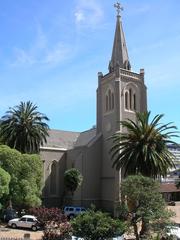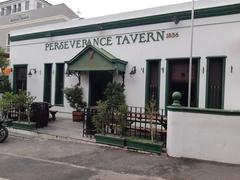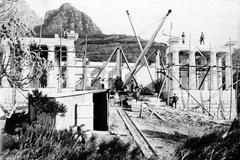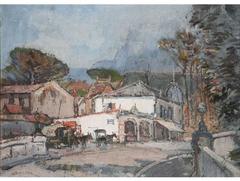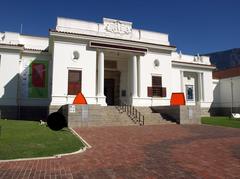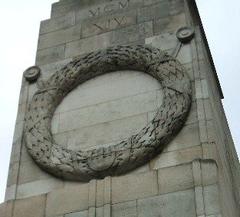
Chavonnes Battery: Visiting Hours, Tickets & Cape Town Historical Sites Guide
Date: 14/06/2025
Introduction
Standing proudly within Cape Town’s renowned Victoria & Alfred Waterfront, the Chavonnes Battery is a remarkable relic of South Africa’s colonial and maritime heritage. Erected in the early 18th century by the Dutch East India Company (VOC), its primary mission was to defend Table Bay—a crucial stopover on the global trade route between Europe and the East Indies. As one of the oldest surviving European military structures in the region, the battery offers an immersive experience into Cape Town’s VOC era, revealing the intricacies of colonial defense, maritime commerce, and early settlement. Unearthed during late-1990s harbor redevelopment, the Chavonnes Battery was meticulously excavated and preserved as a museum, now offering visitors historical exhibits, guided tours, and special events. This guide covers Chavonnes Battery visiting hours, tickets, accessibility, and nearby attractions, drawing on authoritative sources such as the official museum website, South African History Online, and V&A Waterfront resources.
Table of Contents
- Origins and Construction of Chavonnes Battery
- Colonial Defense and Historical Role
- Decline, Demolition, and Rediscovery
- Architectural Features
- Visitor Guide: Hours, Tickets & Tips
- Guided Tours, Events & Exhibits
- Accessibility & Amenities
- Nearby Attractions
- Photographic Spots & Visual Media
- Frequently Asked Questions (FAQ)
- Conclusion
- Sources & Further Reading
1. Origins and Construction of Chavonnes Battery
Commissioned in 1714 by Governor Maurits Pasques de Chavonnes, the Chavonnes Battery was constructed to bolster the VOC’s strategic defense of the Cape. Completed in 1726, the battery featured a semi-circular design with 16—eventually 27—mounted cannons directed at Table Bay (Iziko Museums; Chavonnes Battery Museum). Built from locally quarried stone and lime mortar, its formidable 2.7-meter-thick walls were engineered to withstand naval bombardment.
The battery took its name from Governor de Chavonnes, who recognized the vulnerability of the bay to naval threats. As part of a network of coastal fortifications, its purpose was to protect the VOC’s supply routes and trading interests along the spice route (theoriginalshoreline.org.za; southafrica.net).
2. Colonial Defense and Historical Role
Throughout the 18th century, Chavonnes Battery was integral to Cape Town’s defensive network, which also included the Castle of Good Hope and other batteries along the peninsula (South African History Online). The battery’s garrison—comprised of soldiers and enslaved people—manned the cannons and maintained constant vigilance for enemy ships. The site was equipped with powder magazines, barracks, wells, and storage, making it self-sufficient during sieges.
As naval warfare evolved and the British took control of the Cape in 1795 and 1806, the strategic importance of the battery diminished (Western Cape Government).
3. Decline, Demolition, and Rediscovery
By the 19th century, advances in military technology and urban expansion rendered the battery obsolete. In 1861, much of it was demolished to make way for the Alfred Basin at the emerging V&A Waterfront. For over a century, the battery lay hidden beneath warehouses—its existence nearly forgotten (academia.edu).
During redevelopment in 1999, archaeologists rediscovered substantial remains of the battery. Excavations revealed original walls, gun emplacements, and artifacts, transforming the site into a unique archaeological landmark and, ultimately, a museum (V&A Waterfront).
4. Architectural Features
The Chavonnes Battery’s layout reflects early 18th-century military engineering (Heritage Portal). Key features include:
- Semi-circular Gun Platform: Overlooking Table Bay, allowing crossfire coverage.
- Muzzle-Loaded Cannons: Initially 16, later 27, positioned to deter hostile vessels.
- Powder Magazines: Thick-walled storage for gunpowder and ammunition.
- Barracks and Quarters: Separate accommodations for soldiers, officers, and enslaved workers.
- Water Wells and Stores: To withstand sieges and long isolation.
- Material Use: Local Table Mountain sandstone and lime mortar.
5. Visitor Guide: Hours, Tickets & Tips
Visiting Hours
- Open daily: 10:00 am–5:00 pm (some sources cite 9:00 am–5:00 pm; confirm before visiting).
- Last admission: 30 minutes before closing.
Tickets & Admission
- Adults: R35–R50
- Children (under 12): R15–R30
- Students/Seniors: R20–R30 (with valid ID)
- Group rates: Available on request (contact museum directly)
- Purchase: On-site or online via Chavonnes Battery Museum
Tips for Visitors
- Guided tours are highly recommended for historical insights.
- Weekdays are quieter than weekends or school holidays.
- Wear comfortable shoes and bring a camera.
- Allocate 1–1.5 hours for a typical visit.
6. Guided Tours, Events & Exhibits
- Guided Tours: Available daily (10:00 am–4:00 pm), lasting 40–60 minutes. Guides often wear period attire, sharing stories of the battery’s military and social past.
- Interactive Experiences: Try on period hats, handle replica uniforms, and learn about cannon operation.
- Special Events: Cannon firing demonstrations, educational workshops, art exhibitions, and private venue hire for events.
- Permanent Exhibits: Archaeological ruins, the largest collection of muzzle-loaded cannons in South Africa, historical models, and stories of Table Bay shipwrecks (South Africa Tourism).
7. Accessibility & Amenities
- Wheelchair Accessibility: Ramps and lifts available for most areas, though some uneven surfaces may exist.
- Restrooms: On-site.
- Gift Shop: Books, souvenirs, and crafts.
- No food or drink allowed inside to preserve the ruins.
- Staff assistance available for visitors with mobility needs.
8. Nearby Attractions
Chavonnes Battery’s central location places it within easy reach of Cape Town’s top sites:
- Robben Island Gateway: Ferry terminal is directly opposite.
- V&A Waterfront: Shopping, dining, and entertainment hub.
- Clock Tower & Walking Tours: Explore historic sites on guided walks.
- Two Oceans Aquarium, Watershed market, Signal Hill, and more.
9. Photographic Spots & Visual Media
- Photo Opportunities: Panoramic views of Table Mountain and Table Bay from the museum’s open-air sections.
- Online Resources: Virtual tours and detailed site maps available on the official website.
- Alt Text for Images: Use descriptive tags such as “Chavonnes Battery Cape Town gun emplacements” and “18th-century cannons at Chavonnes Battery Museum” for SEO.
10. Frequently Asked Questions (FAQ)
What are the Chavonnes Battery visiting hours?
Open daily, generally 10:00 am–5:00 pm; check the official website for updates.
How much are tickets?
R35–R50 for adults; discounts for children, students, and seniors.
Are guided tours available?
Yes, daily between 10:00 am and 4:00 pm.
Is the museum wheelchair accessible?
Most areas are accessible; staff can assist as needed.
Can I take photos inside?
Yes, photography is encouraged.
Are there special events at the battery?
Yes, including cannon firings, exhibitions, and private functions.
Is parking available?
Yes, ample parking at the V&A Waterfront.
11. Conclusion
The Chavonnes Battery is a compelling testament to Cape Town’s maritime past, offering visitors a rare journey through centuries of history. From its origins as a VOC stronghold to its rediscovery beneath the bustling V&A Waterfront, it encapsulates the city’s evolution at the crossroads of global trade. With well-preserved ruins, engaging exhibits, guided tours, and cultural events, the battery remains an essential destination for history enthusiasts and travelers alike.
Plan your visit by checking current hours and ticket prices, and consider joining a guided tour for deeper insight into Cape Town’s layered past. For ongoing updates, event announcements, and exclusive travel tips, download the Audiala app and follow us on social media.
12. Sources & Further Reading
- Iziko Museums: Chavonnes Battery
- Chavonnes Battery Museum Official Site
- South African History Online: Chavonnes Battery
- V&A Waterfront: Chavonnes Battery
- South African Tourism: Chavonnes Battery
- SA-Venues: Chavonnes Battery Museum
- Academia.edu: Created, Curated and Commodified—Chavonnes Battery as a Museum
- Chavonnes Battery Museum Tour
- Heritage Portal: Chavonnes Battery’s Forgotten Fortress
